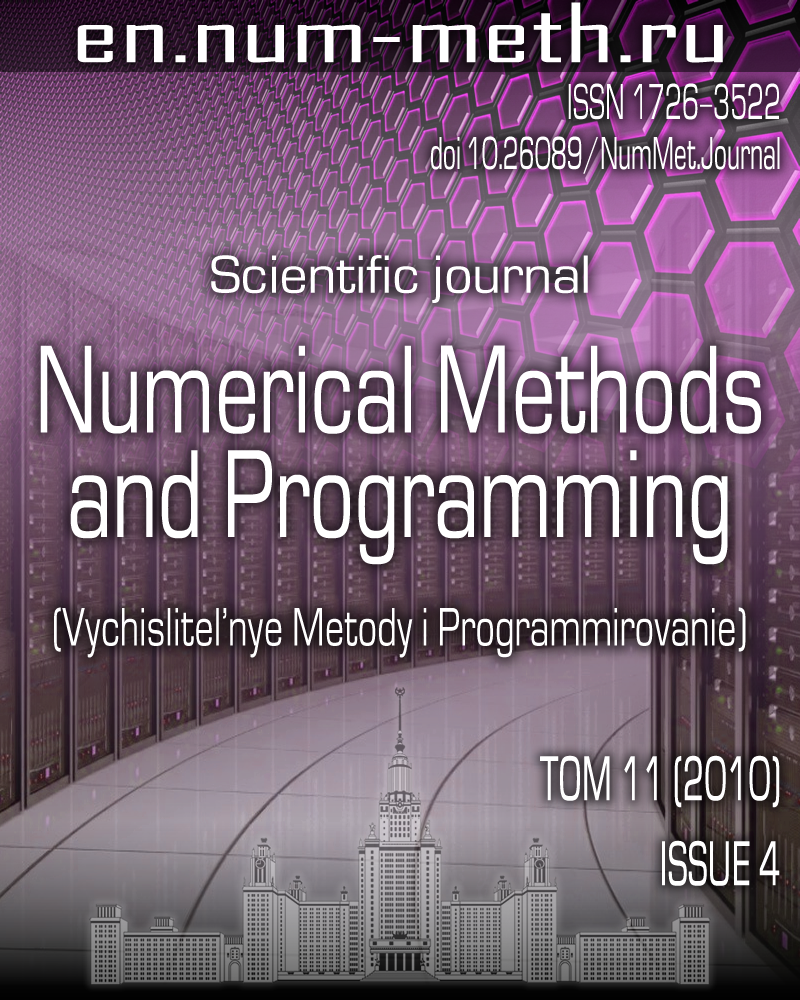Some local and global search balancing methods in parallel global optimization algorithms
Keywords:
Abstract
The paper continues the study of the informational-statistics approach for minimizing multiextremal functions with nonconvex constraints called the index method of global optimization. The procedure of solving multidimensional problems is reduced to solving equivalent one-dimensional ones. This reduction is based on using the Peano curves reflecting the unit segment of the real axis to a hypercube uniquely. The technique of constructing a set of Peano curves is used (rotated evolvements). It can be efficiently applied to solving a problem on a cluster with tens and hundreds processors. The main attention is paid to the use of a mixed local-global computational scheme to speed up the convergence of the parallel algorithm as well as to the application of a local descent after each improvement of a global optimum estimate (record local refinement) followed by the global search continuation.
Published
Issue
Section
References
- Стронгин Р.Г. Поиск глобального оптимума. М.: Знание, 1990.
- Стронгин Р.Г. Параллельная многоэкстремальная оптимизация с использованием множества разверток // Ж. вычисл. матем. и матем. физ. 1991. 31, № 8. 1173-1185.
- Стронгин Р.Г., Баркалов К.А. О сходимости индексного алгоритма в задачах условной оптимизации с epsilon-резервированными решениями // Математические вопросы кибернетики. М.: Наука, 1999. 273-288.
- Strongin R.G., Sergeyev Ya.D. Global optimization with non-convex constraints. Sequential and parallel algorithms. Dordrecht: Kluwer Academic Publishers, 2000.
- Баркалов К.А., Стронгин Р.Г. Метод глобальной оптимизации с адаптивным порядком проверки ограничений // Ж. вычисл. матем. и матем. физ. 2002. 42, № 9. 1338-1350.
- Баркалов К.А. Ускорение сходимости в задачах условной глобальной оптимизации. Нижний Новгород: Изд-во Нижегородского гос. ун-та, 2005.
- Баркалов К.А., Рябов В.В., Сидоров С.В. Использование кривых Пеано в параллельной глобальной оптимизации // Материалы IX Международной конференции-семинара «Высокопроизводительные параллельные вычисления на кластерных системах». Владимир, 2009. 44-47.
- Стронгин Р.Г., Гергель В.П., Баркалов К.А. Параллельные методы решения задач глобальной оптимизации // Известия высших учебных заведений. Приборостроение. 2009. 52, № 10. 25-32.
- Jones D.R., Perttunen C.D., Stuckman B.E. Lipschitzian optimization without the Lipschitz constant // J. of Optimization Theory and Applications. 1993. 79, N 1. 157-181.
- Gablonsky M.J. Modifications of the DIRECT algorithm. Ph.D. thesis, North Carolina State University. Raleigh, 2001.
- Gablonsky M.J., Kelley C.T. A locally-biased form of the DIRECT algorithm // J. of Global Optimization. 2001. 21, N 1. 27-37.
- Gaviano M., Kvasov D.E., Lera D., Sergeyev Ya.D. Software for generation of classes of test functions with known local and global minima for global optimization // ACM TOMS. 2003. 29, N 4. 469-480 // (verb|http://si.deis.unical.it/ yaro/GKLS.html|).
- Lera D., Sergeyev Ya.D. Lipschitz and Hölder global optimization using space-filling curves // Applied Numerical Mathematics. 2010. 60, N 1-2. 115-129.


